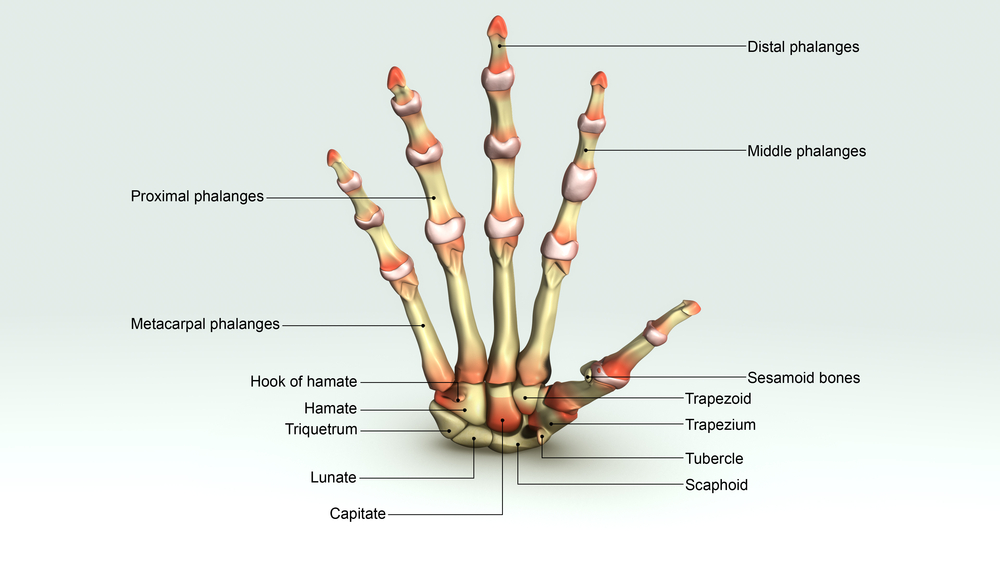Everything you need to know about DIP arthritis in your hand (finger, thumb, pink, and toe)
Finger arthritis occurs mainly in the PIP joint. That’s the second joint from the fingertip. Wear of the cartilage of the DIP joint is less common. This distal interphalangeal joint (or articulus interphalangicus distalis) is the joint between the penultimate and end-root, therefore just above the PIP joint. Because the PIP joint plays a central role in the gripping function, this joint is more often affected by osteoarthritis. The PIP joint is therefore more heavily burdened than the DIP joint.
What is the cause of arthritis in the DIP joint?
Arthritis of the DIP joint occurs when the cartilage lining on the joint surfaces is reduced. The result of this wear is that the bone ends of the joints can move less smoothly over each other. Eventually, the cartilage may partially or even disappear completely. Then bone-on-bone contact is created when you want to bend or stretch your fingers. Why the cartilage is going to wear is not known. Usually this is a natural process of aging. As age increases, the quality of the cartilage decreases. An accident, bruising, fracture or other finger injury may increase the risk of osteoarthritis to the DIP joint.
What are the symptoms of arthritis in the DIP joint?
You suffer from arthritis of the DIP joint when a sore pain is present around the first transverse finger line from the fingertip. In addition, you also often get stiffness and swelling at this location. As a result, you cannot flex and stretch your finger anymore. Power loss can also occur. At the edges of the affected joints bone tissue can take the place of the worn cartilage. As a result, thickenings occur on the finger at the DIP joint. This phenomenon is called ‘noduli of Heberden’.
How is osteoarthritis of the DIP joint diagnosed?
Your GP can clearly recognize osteoarthritis on the DIP finger joint. You will explain the symptoms to him during consultation. Usually a conversation and an examination of the finger are sufficient to make a diagnose. Sometimes the GP can decide to make an X-ray to get 100 percent confidence.
How is arthritis of the DIP joint treated?
Keeping short rest periods can provide relief for arthritis of the DIP joint. You try to bend or stretch the affected finger for a few days as little as possible. To help ease the pain, your doctor may prescribe an anti-inflammatory analgesic (NSAID). If you do not prefer to use it because of the annoying side effects, you can choose a natural alternative. For many types of arthritis, Liquid Green-lipped mussel with Bio-Curcumin (BCM-95®) can help to relieve pain. Also, an injection with corticosteroids may significantly reduce the symptoms of DIP joint in early arthritis. If the arthritis of the DIP joint overcomes you in your daily activities, you can wear a splint to relieve the end joint of your finger. These detachable braces can be customized.
When is surgery involved in arthritis of the DIP joint?
If these treatments are not successful or when the wear process is too advanced, surgery can be performed on the DIP joint. Depending on your situation, the doctor may choose from two options. In most cases, it is a DIP arthrodic. During this operation, the DIP joint is locked. You cannot move the joint anymore, but use it again without pain. The other joints take over the function of the DIP joint so that you can continue to use your finger normally. The benefit of this operation is that you will recover relatively quickly.
The second surgical option is to replace the affected joint by a DIP prosthesis. This is made of metal or plastic. This operation is not yet carried out by many hospitals, because they are not satisfied with the current generation of DIP prostheses.

Share this page
Tweet

Download for free the booklet ‘Moving without pain’ with a retail value of $6.75 / £4.95.
Any questions? Please feel free to contact us. Contact us.






